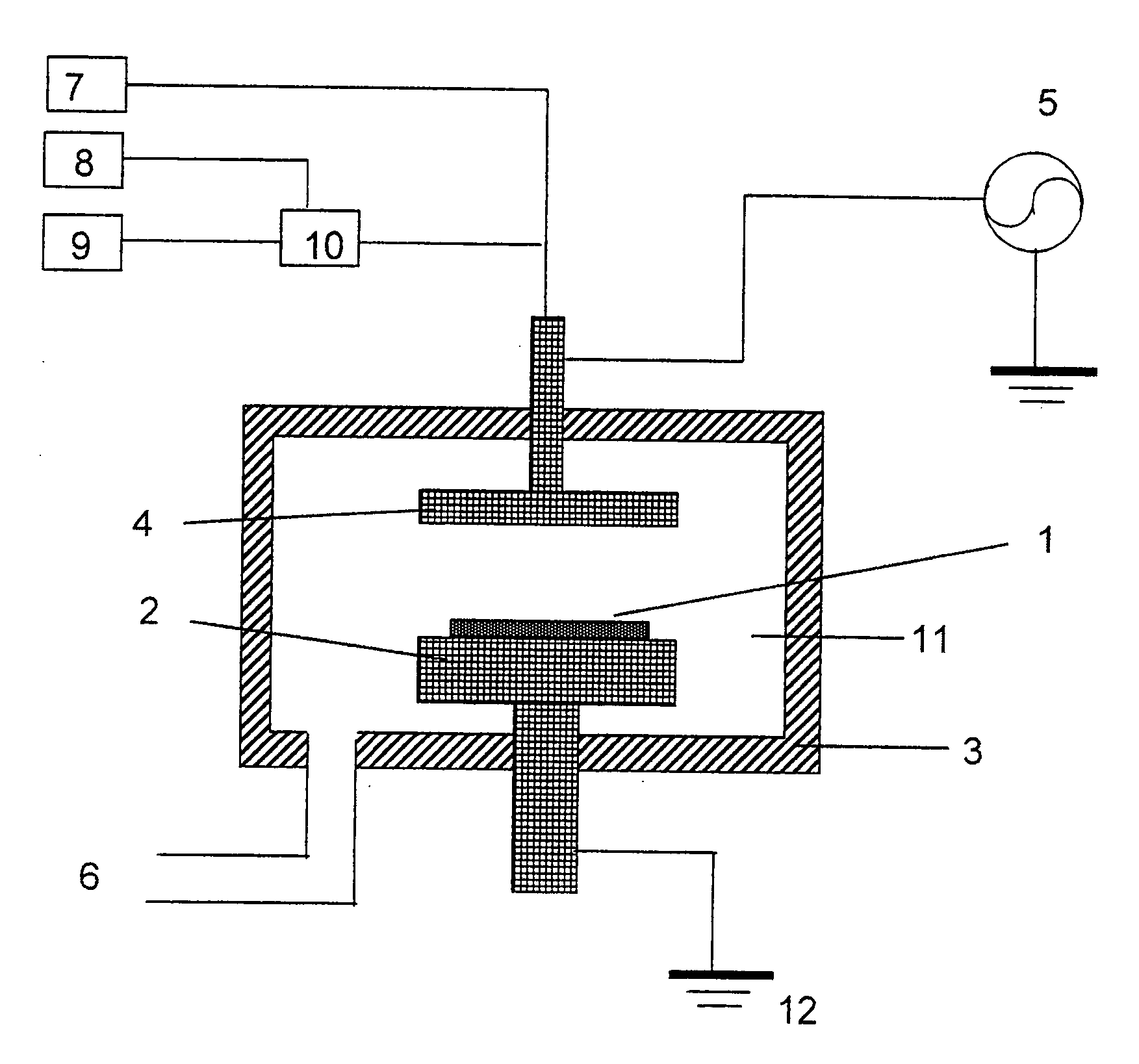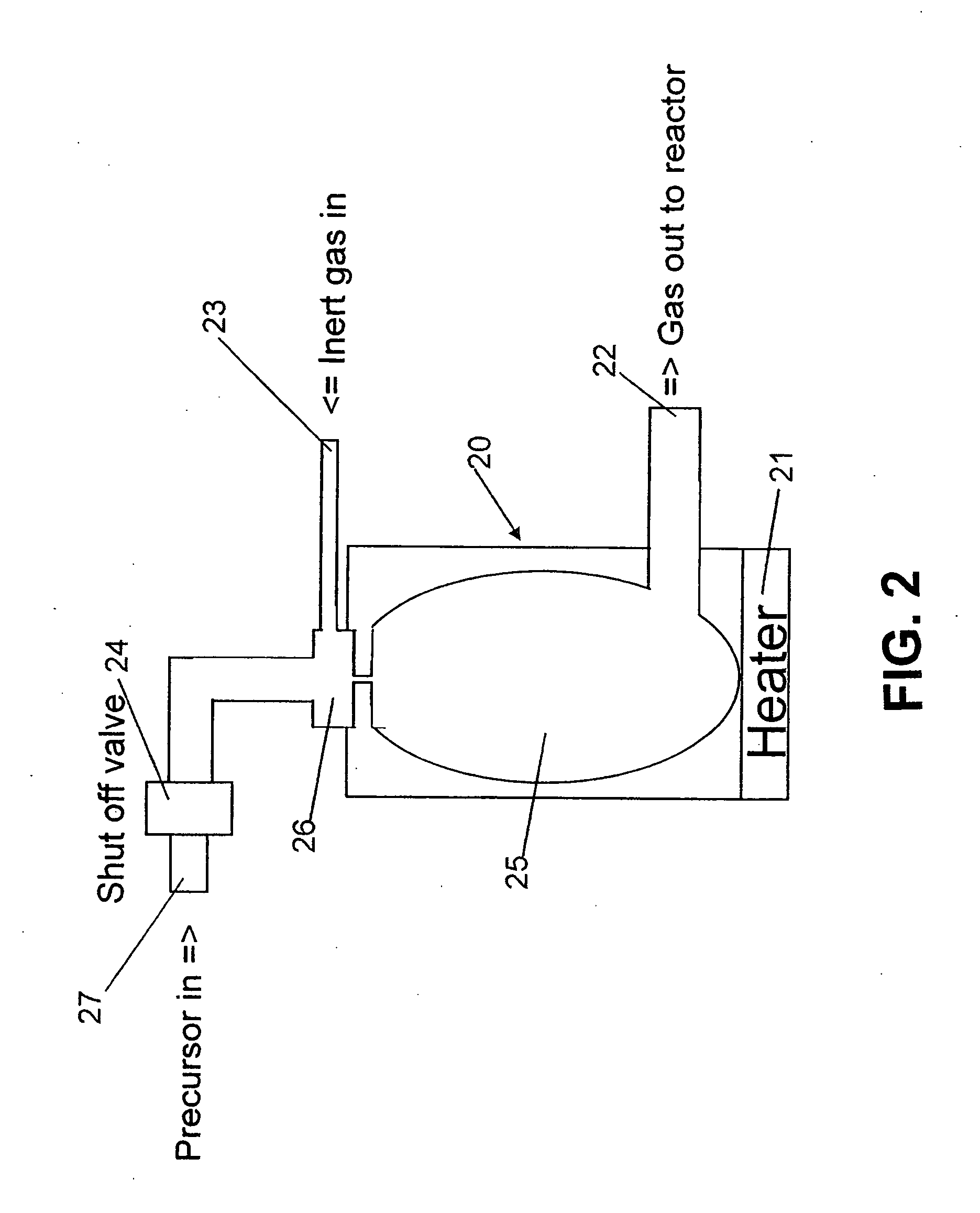Method of forming carbon polymer film using plasma CVD
- Summary
- Abstract
- Description
- Claims
- Application Information
AI Technical Summary
Benefits of technology
Problems solved by technology
Method used
Image
Examples
example 1
CO2: 3,000 sccm
[0110] Process conditions in this example and film formation results are shown as follows:
[0111] Gap between shower plate and susceptor: 16 mm
[0112] Process Conditions:
[0113] C6H3(CH3)3: 130 sccm
[0114] CO2: 3,000 sccm
[0115] He supplied to vaporizer: 170 sccm
[0116] Process gas He supplied to reactor: 44 sccm
[0117] RF Power 13.56 MHz: 400 W
[0118] RF Power 400 kHz: 145 W
[0119] Pressure: 800 Pa
[0120] Film formation time: 42 sec
[0121] Film Formation Results:
[0122] Thickness: 200 nm
[0123] RI(n): 1.777 at 633 nm
[0124] RI(k): 0.075 at 633 nm
[0125] RI(n): 1.513 at 193 nm
[0126] RI(k): 0.244 at 193 nm
[0127] Modulus: 9.46 GPa
[0128] Mechanical Hardness: 1.288 GPa
[0129] In the above Example, as compared with Comparative Example 1, refractive index (n) and extinction coefficient (k) at 633 nm increased from 1.690 and 0.018 to 1.777 and 0.075, respectively; however, at 193 nm, although refractive index (n) increased from 1.438 to 1.513, extinction coefficient (k) ...
examples 2 and 3
CO2: 370 sccm and 740 sccm
[0130] Process conditions in these examples were essentially the same as in Example 1 except for the flow rate of CO2 and the deposition rate as shown in Table 1. Film formation results are also shown in Table 1.
[0131] As shown in Table 1, the above-described phenomena can be seen in these examples, which are generally or substantially proportional to the flow rate of CO2.
example 4
H2: 200 sccm
[0134] Process conditions in this example was essentially the same as in Example 1 except that H2 was used at 200 sccm as an additive gas instead of CO2 and the film formation time was 24 seconds (the deposition rate was 495 nm / min). Film formation results are shown in Table 1.
[0135] As shown in Table 1, by using H2 as an additive gas at 200 sccm, refractive index (n). and extinction coefficient (k) at 633 nm increased, whereas refractive index (n) and extinction coefficient (k) at 193 nm decreased. Interestingly, these phenomena are slightly different from those in Examples 1-3. Mechanical hardness increased. When H2 is added as an additive gas, H derived from H2 forms an H-terminal in —CH2 or promotes crosslinking as a reduction agent at —CH2, for example, present in film structures, thereby rendering its molecular structures more complex but interestingly decreasing the extinction coefficient (k) (more light passes through the film). This may be because the molecula...
PUM
| Property | Measurement | Unit |
|---|---|---|
| Temperature | aaaaa | aaaaa |
| Temperature | aaaaa | aaaaa |
| Temperature | aaaaa | aaaaa |
Abstract
Description
Claims
Application Information
 Login to View More
Login to View More - R&D
- Intellectual Property
- Life Sciences
- Materials
- Tech Scout
- Unparalleled Data Quality
- Higher Quality Content
- 60% Fewer Hallucinations
Browse by: Latest US Patents, China's latest patents, Technical Efficacy Thesaurus, Application Domain, Technology Topic, Popular Technical Reports.
© 2025 PatSnap. All rights reserved.Legal|Privacy policy|Modern Slavery Act Transparency Statement|Sitemap|About US| Contact US: help@patsnap.com



